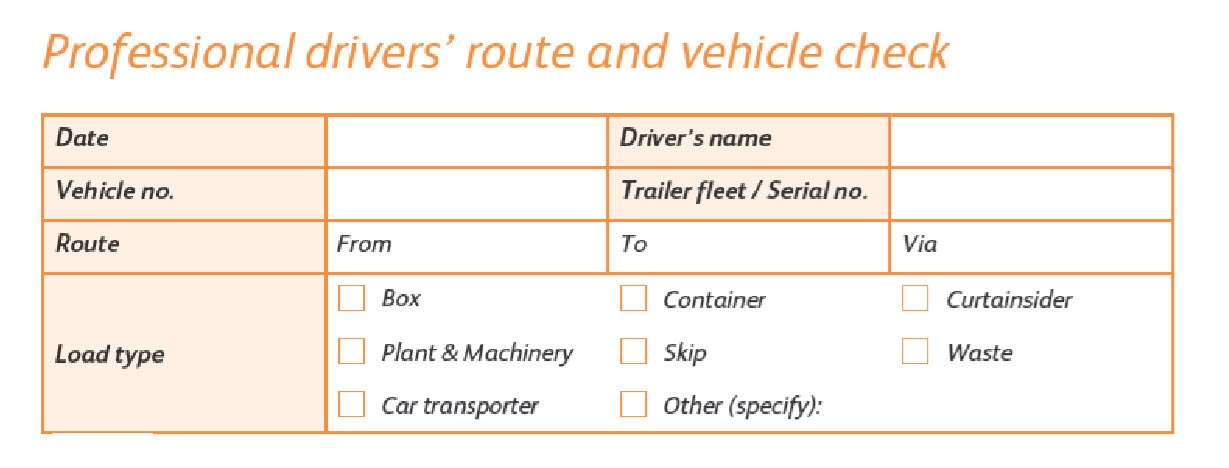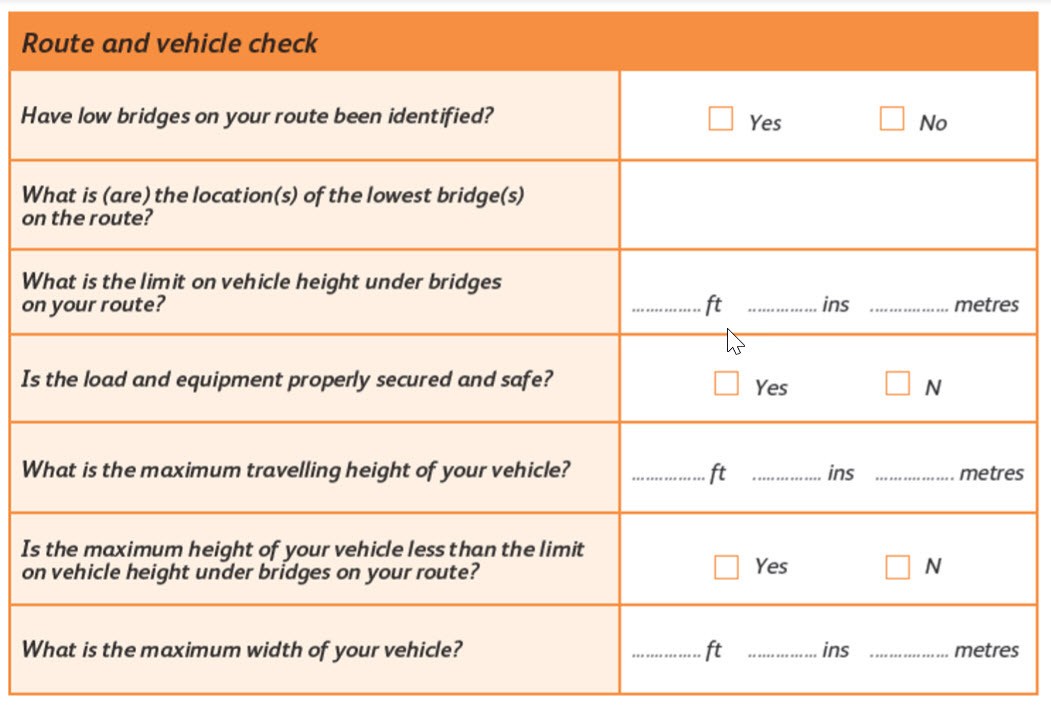Prevention of bridge strikes
Lesson 2
Introduction
This good practice guide is intended to give guidance to professional drivers so that bridge strikes can be prevented and to provide advice on the risks and consequences of bridge strikes.
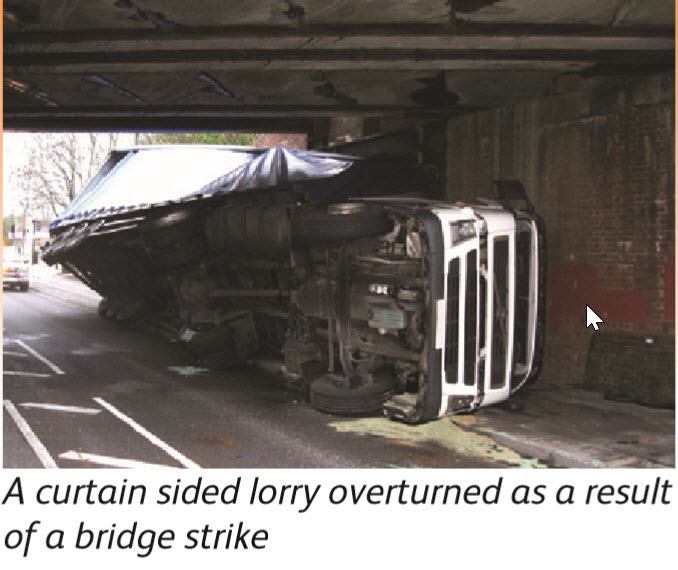
What is a bridge strike?
A bridge strike is an incident in which a vehicle, its load or equipment collides with a bridge.
Most bridge strikes occur where roads pass under railway bridges. Prevention of bridge strikes Your responsibilities are to:
- Know your vehicle height and width
- Know your route
Obey traffic signs Before commencing a journey check:
- The security and safety of the load
- The height of the cab
- The height of the trailer, its load and equipment
- That the correct maximum height is displayed in the cab
- The maximum vehicle width
- Do not rely on the information on the headboard as coupler heights can vary.
Report any discrepancy between the measured height and that shown on the headboard to your Transport Manager A route and vehicle check pro – forma is provided for your use to record checks carried out to aid the prevention of bridge strikes.
When en route You commit an offence if the overall travelling height of your vehicle is over 3 metres and the correct maximum height is not displayed in the cab.
Remember, your vehicle height can change for a variety of reasons, for example, adjustment of the 5th wheel, trailer loaded, unloaded or reloaded.
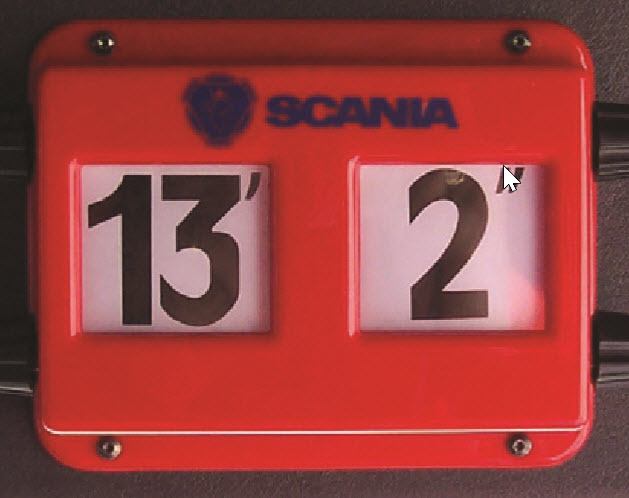
Notice in a driver’s cab displaying the overall vehicle height
Avoid short cuts to save time as this may lead you to a low bridge.
Use a LGV specific satellite navigation system.
Don’t rely on a system designed for cars as these will not avoid low bridges.
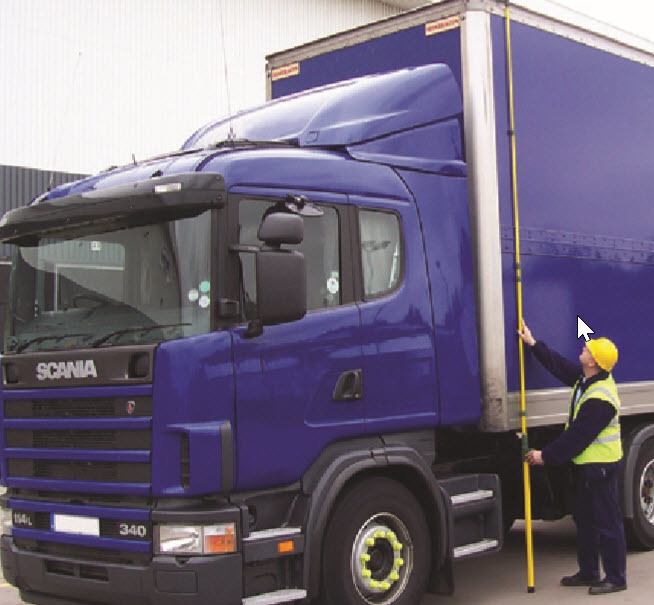
Always check the maximum height of your vehicle, its load and equipment
Stop and seek advice on an alternative route if you:
- Are diverted from your planned route
- Realise that your route is obstructed by a bridge lower than your vehicle
- Remember that it is an endorseable offence to use a hand held mobile phone or similar device whilst driving.
Traffic signs
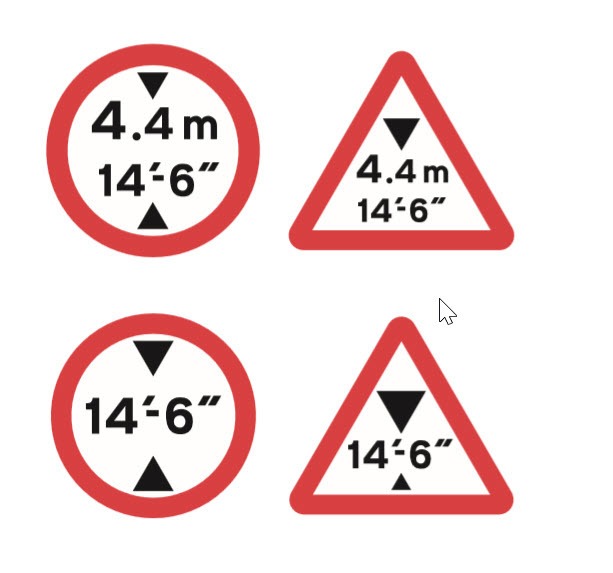
You should be aware that traffic signs are provided at bridges to show the maximum permitted vehicle height when less than 16´-3˝ (4.95 metres) :
- Red circles prohibit
- Red triangles warn
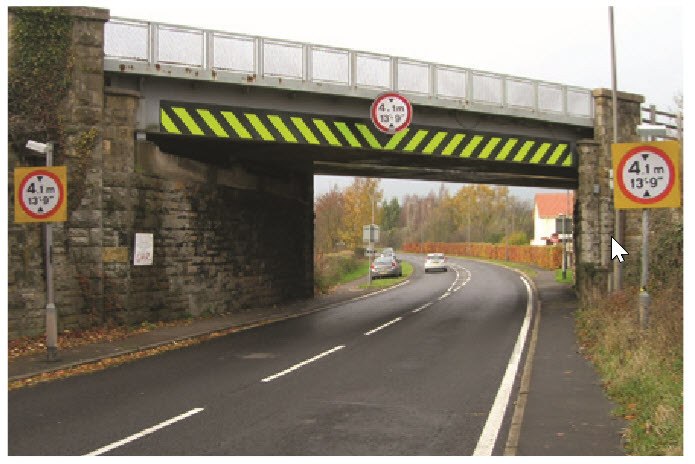
Warning chevrons and mandatory roundel signs showing the limit on vehicle height at a flat soffit bridge
If a vehicle is higher than the dimension(s) shown on a circular traffic sign, you must stop and must not pass the sign. If you pass the sign you are likely to collide with the bridge and be prosecuted. I
f the vehicle is higher than the dimension(s) shown on a triangular traffic sign at the bridge, you should not pass the sign. At arch bridges, white lines on the road and ‘goal posts’ on the bridge may be provided to indicate the extent of the signed limit on vehicle height, normally over a 3 metre width.
There may be an additional set of ‘goal posts’ showing lower limits towards the kerb.
At arch bridges ensure your vehicle passes between the goal posts.
Slow down as you approach the bridge and only move to the centre of the road when you are sure it is safe to do so. If necessary sound your horn or use dipped headlights to warn of your presence.
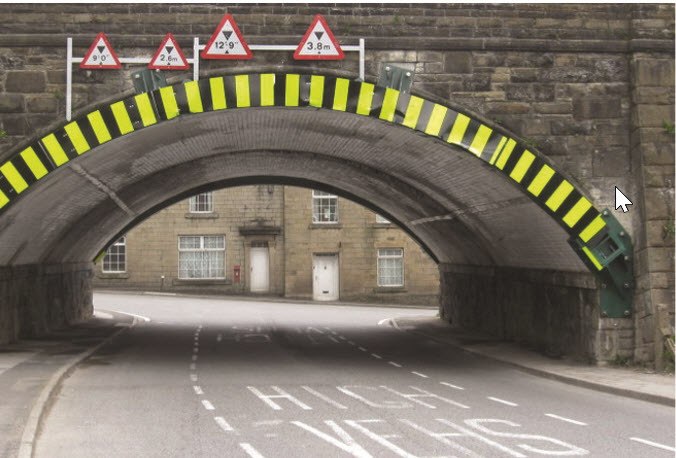
White lines on the road and ‘goal posts’ on the arch indicating the extent of the signed vehicle height limit
Drivers of vehicles with wide loads over 3m (9´-10˝) need to take extra care at arch bridges as the maximum height available will be less than the signed limit.
What action should be taken if a bridge strike occurs?
On the approaches to bridges with a vehicle height restriction, signs might be provided to give you advance warning of the restriction. This is to help you take an alternative route avoiding the low bridge.

Advance warning of a prohibition ahead and alternative route
You should be aware, however, that advance warning signs are not provided at all low bridges
What action should be taken if a bridge strike occurs?
At a railway bridge
Step 1:
Report the bridge strike to the Rail Authority immediately so that trains may be stopped from crossing the bridge Telephone the number shown on the identification plate on the bridge.
Do not wait until you return to your depot before reporting the bridge strike.
Step 2:
Advise the police using the 999 system. Any road traffic collision that causes damage to a 3rd party must be reported.
Each bridge strike causes damage to a bridge, and must therefore be reported.
Step 3:
Report the bridge strike to your employer.
Step 4:
Keep the public away and do not move your vehicle.
At any other bridge Report the bridge strike to the Police using the 999 system and then your employer. Keep the public away and do not move your vehicle.
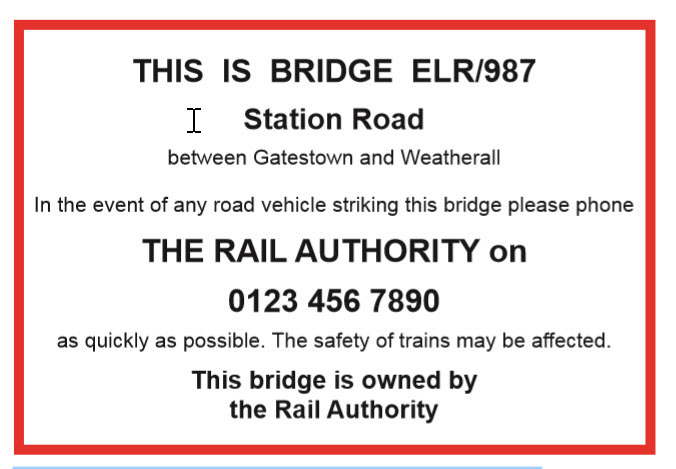
Example identification plate at a Network Rail bridge
What are the consequences of a bridge strike?
Striking bridges is potentially dangerous and expensive.
On the railway
- A serious incident could result in a train being derailed with catastrophic loss of life
- Bridge strikes may seriously jeopardise the safety of the public travelling by train
- Every bridge strikes causes delays and disruption to trains
- Bridge strikes cause damage to railway bridges on other road users
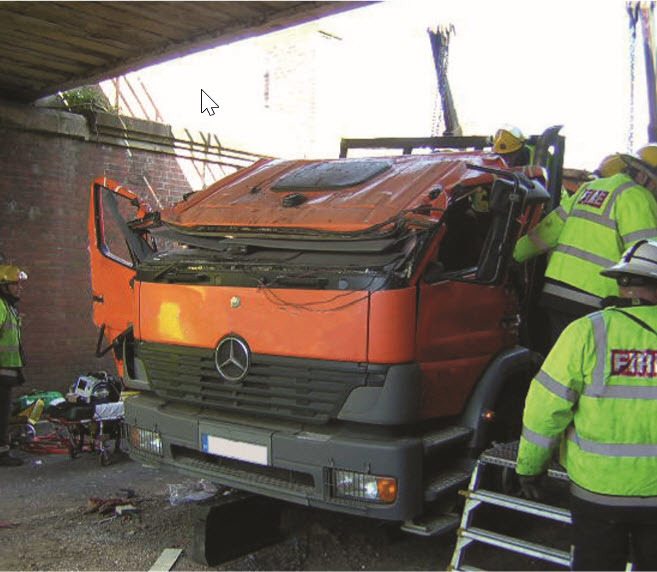
Crushed cab of a skip lorry following a bridge strike
On you and your employer You could:
- Be killed or seriously injured
- Suffer serious economic loss – you could lose your job
- Be prosecuted for offences which can result in imprisonment or loss of your driver’s licence
- Have to pay increased personal car insurance premiums Your company could lose their operator’s licence
Your company will be liable for the costs of: - Examining the bridge
- Repairing bridge damage
- Recovering your vehicle and its load
- Delays to train services
Appendix



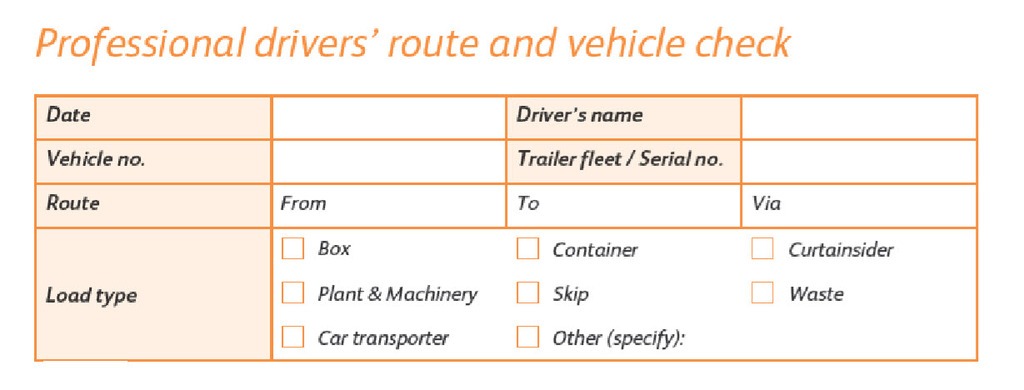
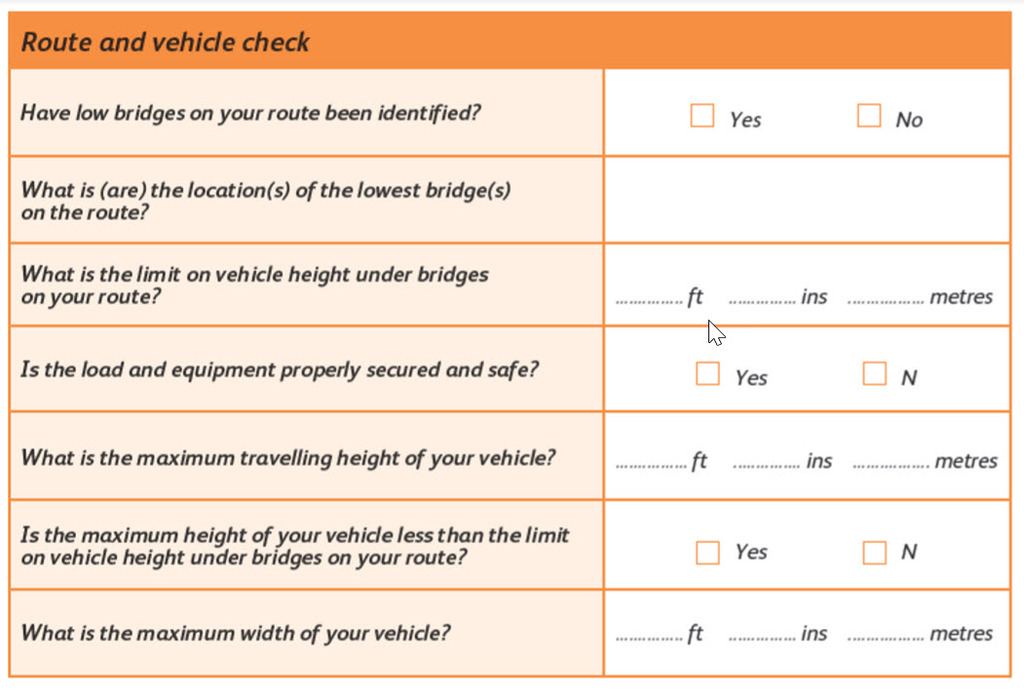

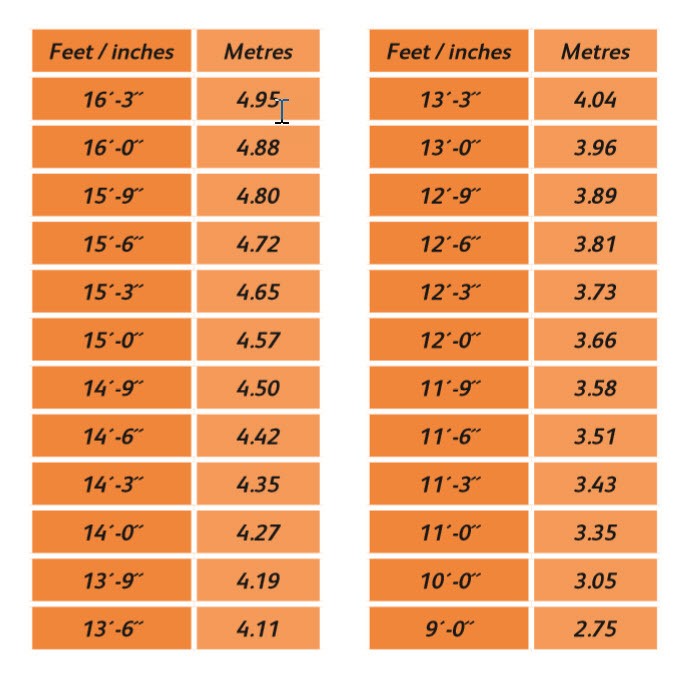
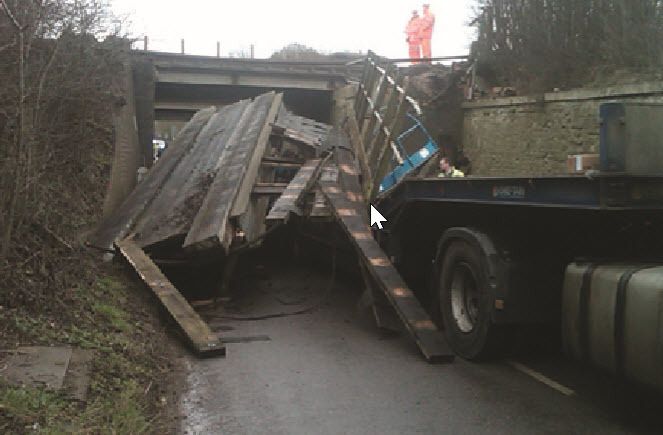
Bridge dislodged from abutments onto the vehicle which struck it

